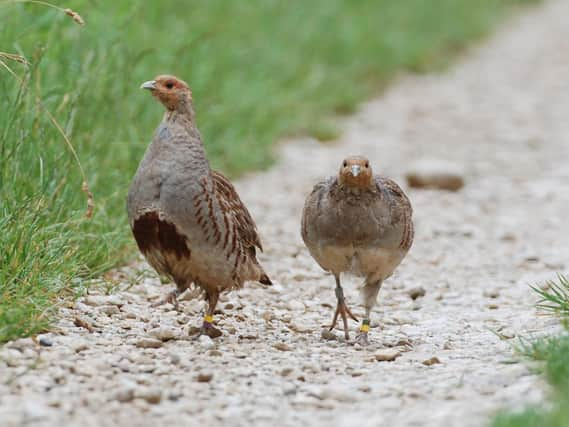Conservation measures to protect one of the 'fastest declining' farmland birds, the grey partridge could help farmland diversity according to new publication


Farming With Nature, which has been published by the PARTRIDGE Project, says the bird’s presence on arable farmland is an indicator as to the health of its ecosystem.
“Where partridges thrive, other farmland wildlife will follow,” the Project, which is led by the Game and Wildlife Conservation Trust (GWCT), said. Numbers of grey partridges across
Advertisement
Hide AdAdvertisement
Hide AdEurope have dropped by 90 per cent since the 1970s and the GWCT has been monitoring their numbers since 1933 through the Partridge Count Scheme (PCS).
The birds are monitored in spring and autumn with northern England recording a five per cent increase of 1,301 from 1,238 spring pairs between 2019 and 2020.
The region also recorded 21 per cent of all spring pairs counted.
The PARTRIDGE Project is a collaboration between 14 partners in six countries across Europe which uses 10 500 hectare demonstration sites to show how farmland wildlife can be restored by up to 30 per cent.
Advertisement
Hide AdAdvertisement
Hide AdThe sites include three in the UK and six spread across the Netherlands, Belgium and Germany. Farming with Nature is based on scientific research from these sites.
Written by GWCT’s conservation scientists Dr Julie Ewald and Dr Francis Buner, along with science writer Jen Brewin, Dr Buner said the aim of Farming with Nature, is to explain the approaches used on the PARTRIDGE demonstration sites and the science they are based on to show how they work for partridges and other species sharing the farmland.
It outlines the wider factors for both partridge decline and the farmland biodiversity crisis across Europe, describing techniques developed to reverse it.
These include planting wildflower mixes, managing hedgerows, maintaining grass margins and conservation headlands, which, it says, can be integrated with modern farming systems for a viable farming business.
Advertisement
Hide AdAdvertisement
Hide AdThe publication of the report has been welcomed by NFU president and farmer, Minette Batters, who said: “I hope this book will inspire farmers and policy makers across Europe and help to shape future UK agri-environment policy.”
Around 30 to 40 farms across Yorkshire take part in the Partridge Count Scheme and the GWCT said it would like to hear from any farm, landowner or estate which has grey partridges, especially those “holding on” to only a pair or two and who are willing to spare a few a years to count their ground and report the number of partridges they see.
They said they would be particularly interested in hearing from arable, mixed-farms, shoots and estates in the Vales of Mowbray, York and Pickering, the Wolds and Holderness areas.
A spokesman for the GWCT said the free scheme was a useful tool for any farmers wanting to make an impact and putting in measures to help grey partridges.
Advertisement
Hide AdAdvertisement
Hide Ad“By monitoring twice a year, farmers, keepers and landowners can know that if what they’re doing is helping the grey partridge on their land.
“Doing without knowing it’s helping is potentially an expensive and time-consuming waste of time.”